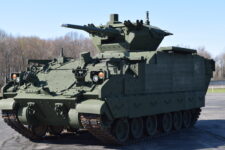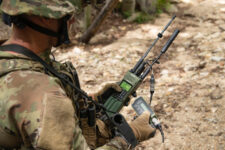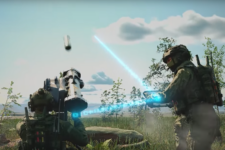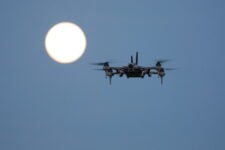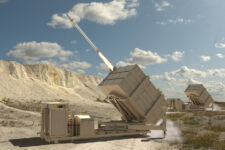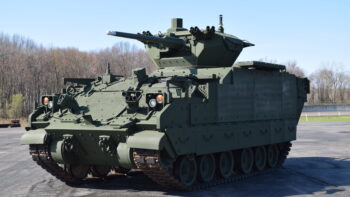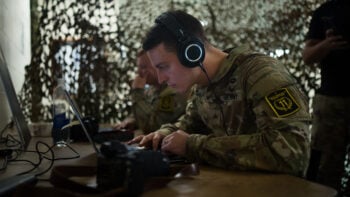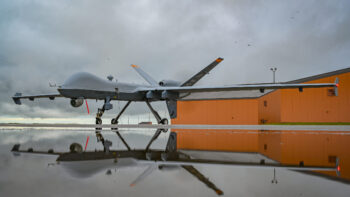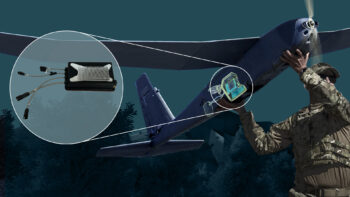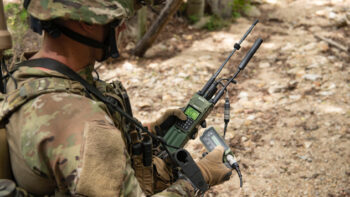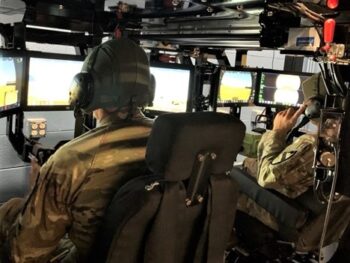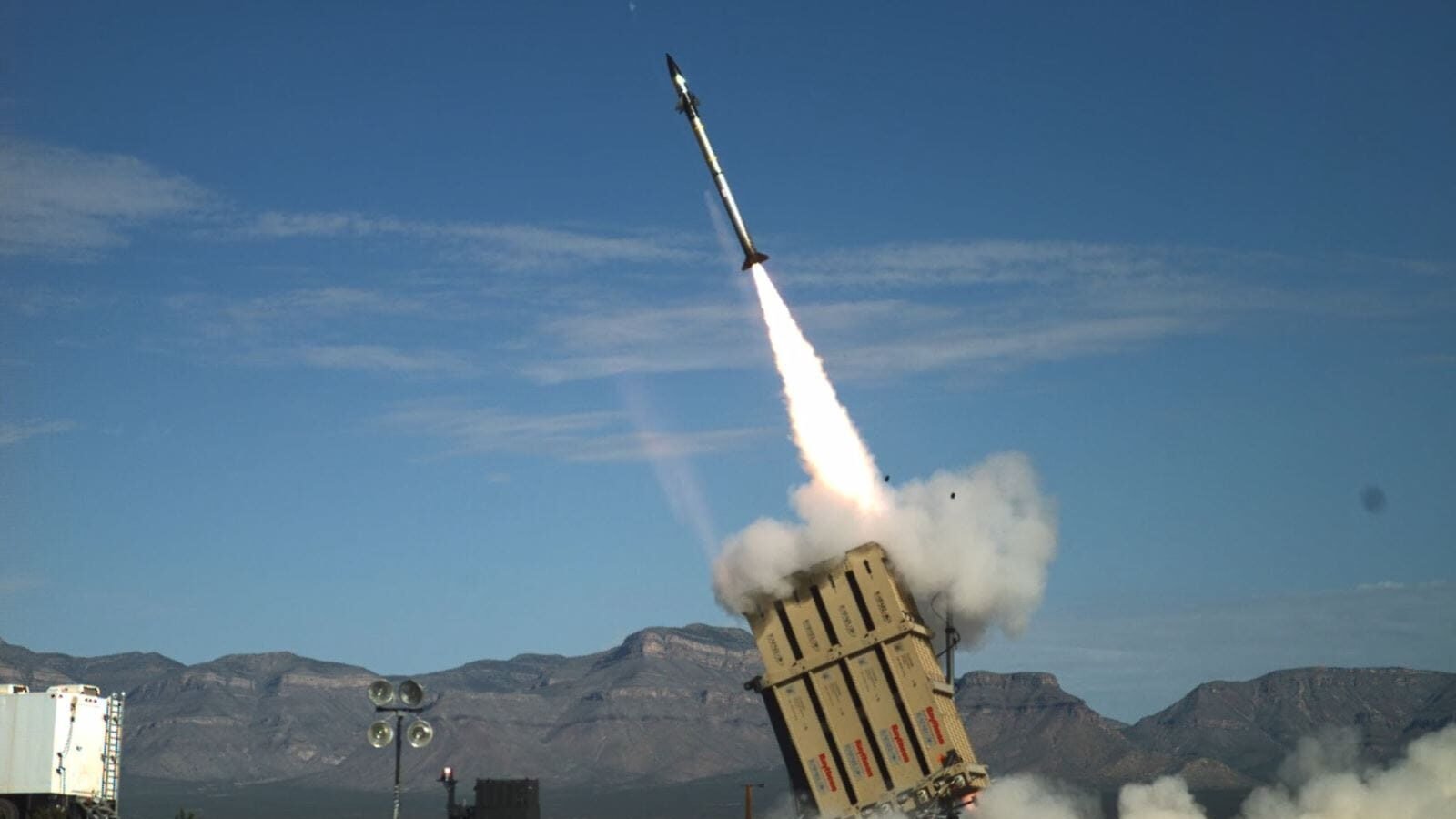
A live-fire test of an initial MRIC prototype in December 2021. (US Marine Corps)
WASHINGTON — It’s been nearly three years since Raytheon and Israel’s Rafael Advanced Defense Systems announced plans to team up to manufacture Iron Dome’s Tamir interceptor inside the United States. So far, they have not officially picked a production site but in an unusual move the US Marine Corps is publicly touting a recent visit to potential site in Arkansas.
“The Program Executive Officer [PEO] Land Systems, Ground Based Air Defense Program Manager recently visited Camden, Arkansas, to discuss the possibility of producing the Iron Dome Tamir missile and future Americanized version known as SkyHunter for the Medium Range Intercept Capability [MRIC] program,” the service’s PEO Land Systems wrote in an announcement obtained by Breaking Defense ahead of release. That visit, and associated discussions, occurred on July 19, and included representatives from both companies, a team known as R2S, who provided the service with a site tour and detailed concept design.
“This will be a great thing for the Medium Range Intercept Capability [MRIC] program and for the USMC, if this occurs,” said Don Kelley, the Marine Corps Program Executive Officer Land Systems Ground-Based Air Defense program manager. If a US site does come to fruition, the service noted that the Israeli Missile Defense Organization also could use it as second source of Tamir missiles.
East Camden, a small town in southern Arkansas just outside Camden proper, is home to an existing Raytheon facility, as well as those belonging to other defense contracting giants, including a site where Lockheed Martin produces HIMARS.
In August 2020, R2S announced a teaming agreement and said that by the end of that year it would disclose where the US-version of the Tamir would be produced. Two-and-half-years past that deadline, R2S remains tight lipped. A Raytheon spokeswoman did immediately respond to Breaking Defense’s questions for this report.
Though an industry source told Breaking Defense the US could rely on Israeli-produced missiles if the delay for a US production facility lingers, Kelly has made it clear he wants to avoid long term that and has been eyeing an interceptor “update” that shores up the US-production base and swamps out six non-US components.
“By the time we get to 2025, I fully anticipate that we’ll be producing most of those missiles [in the US] depending on when they get to capacity early on,” he told an audience at the Modern Day Marine expo in June.
The MRIC system is based around a truck-mounted Iron Dome launcher paired with Tamir interceptors that use the Common Aviation Command-and-Control System (CAC2S) and a mini battle management control (BMC) system for the Tamir missile, along with the AN/TPS-80 Ground/Air Task Oriented Radar (G/ATOR).
After the service wrapped up a trio of MRIC live-fire tests in September 2022, the Corps’ Milestone Decision Authority met in December 2022 and opted to move forward with the certification process with the aim of having the first battery ready for fielding around 2025. Though a variety of hurdles could crop up between now and then, the program seems to have senior leader support, including President Joe Biden’s pick to take over the service.
“We held [off] on funding for [MRIC] for almost two years, until you can prove it,” USMC Assistant Commandant Gen. Eric Smith said during a July 2022 event at the Center for Strategic and International Studies. “Now it was proven. Now we start procuring it.”
As the service moves ahead with MRIC, it isn’t abundantly clear what is delaying the Tamir-SkyHunter US production announcement.
At the time the R2S team announced plans for the US site, it was also competing for the Army’s Indirect Fire Protection Capability Increment 2 (IFPC Inc 2) competition and also offering Iron Dome with the Tamir/SkyHunter interceptor. The team ultimately lost to a Dynetics-Raytheon team, which put forward the Enduring Shield prototype launcher paired with Raytheon’s ground-launched AIM-9X Sidewinder missile. (At the time, Raytheon said it had set up an internal firewall to protect the separate teams).
If Rafael-Raytheon had won the deal, it would have meant more work for the Tamir-SkyHunter production line. But all is not lost for the Tamir/SkyHunter’s IFPC Inc 2 future, as the Army is now seeking a second interceptor, and Rafael told Breaking Defense earlier this year that it plans to jump in the competition again.
BAE Systems eyes larger AMPV production line, new variants, foreign customers
As company leaders eye new AMPV variants and potential international customers, they want to boost the York facility’s annual production capacity up towards 220 vehicles.
